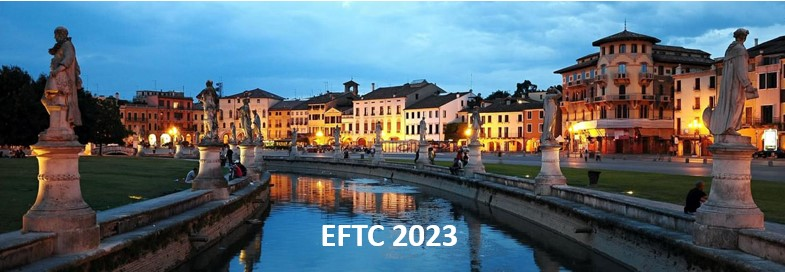Speaker
Description
The EC launcher conceptual design is moving towards an engineering design that will satisfy all physics requirements under the various system constraints, including maximum flexibility in case of further refinements of plasma scenarios and tasks [1]. In the current DEMO reference scenario, for the specific magnetic field and plasma density/temperature adopted, the gyrotron frequencies considered for fulfilling the EC-related tasks (as, e.g., plasma breakdown and ramp-up/down, central heating and MHD stabilization) are 136, 170 and 204 GHz.
During 2022, part of the investigation has been focused to the evaluation of the present design capabilities in case of a modification of the DEMO reference scenario (with either increase or decrease of the central magnetic field), regarding the tasks of EC-assisted breakdown and core plasma heating. For plasma breakdown, the primary goal is to direct EC beams to the region where the null point of the magnetic configuration is programmed to appear, whereas for core heating we also consider beams with frequency higher than 204 GHz (up to 240 GHz) for accommodating scenarios with elevated values of the central magnetic field.
This work presents and analyses beam tracing numerical simulations of the aforementioned scenarios, which have been performed in order to establish the parameter regions where the EC system performance is satisfactory with respect to the current DEMO requirements regarding the specific tasks [2]. The computations have been performed with the paraxial WKB beam tracing code TORBEAM [3], for magnetic equilibrium, plasma temperature and density profiles related to the DEMO design currently under consideration, and for selected EC wave frequencies, initial beam parameters (width, curvature radius and propagation direction) and launching positions, and provide the wave parameters related to DEMO heating and current drive (deposition radius, absorbed power and total driven current).
This work has been carried out within the framework of the EUROfusion Consortium, partially funded by the European Union via the Euratom Research and Training Programme (Grant Agreement No 101052200 — EUROfusion). The Swiss contribution to this work has been funded by the Swiss State Secretariat for Education, Research and Innovation (SERI). Views and opinions expressed are however those of the author(s) only and do not necessarily reflect those of the European Union, the European Commission or SERI. Neither the European Union nor the European Commission nor SERI can be held responsible for them.
References:
[1] M. Q. T. Tran, et al., Fusion Engineering and Design 180, 113159 (2022)
[2] M. Siccinio, et al., Fusion Engineering and Design 179, 113123 (2022)
[3] E. Poli, et al., Computer Physics Communications 136, 90 (2001)

